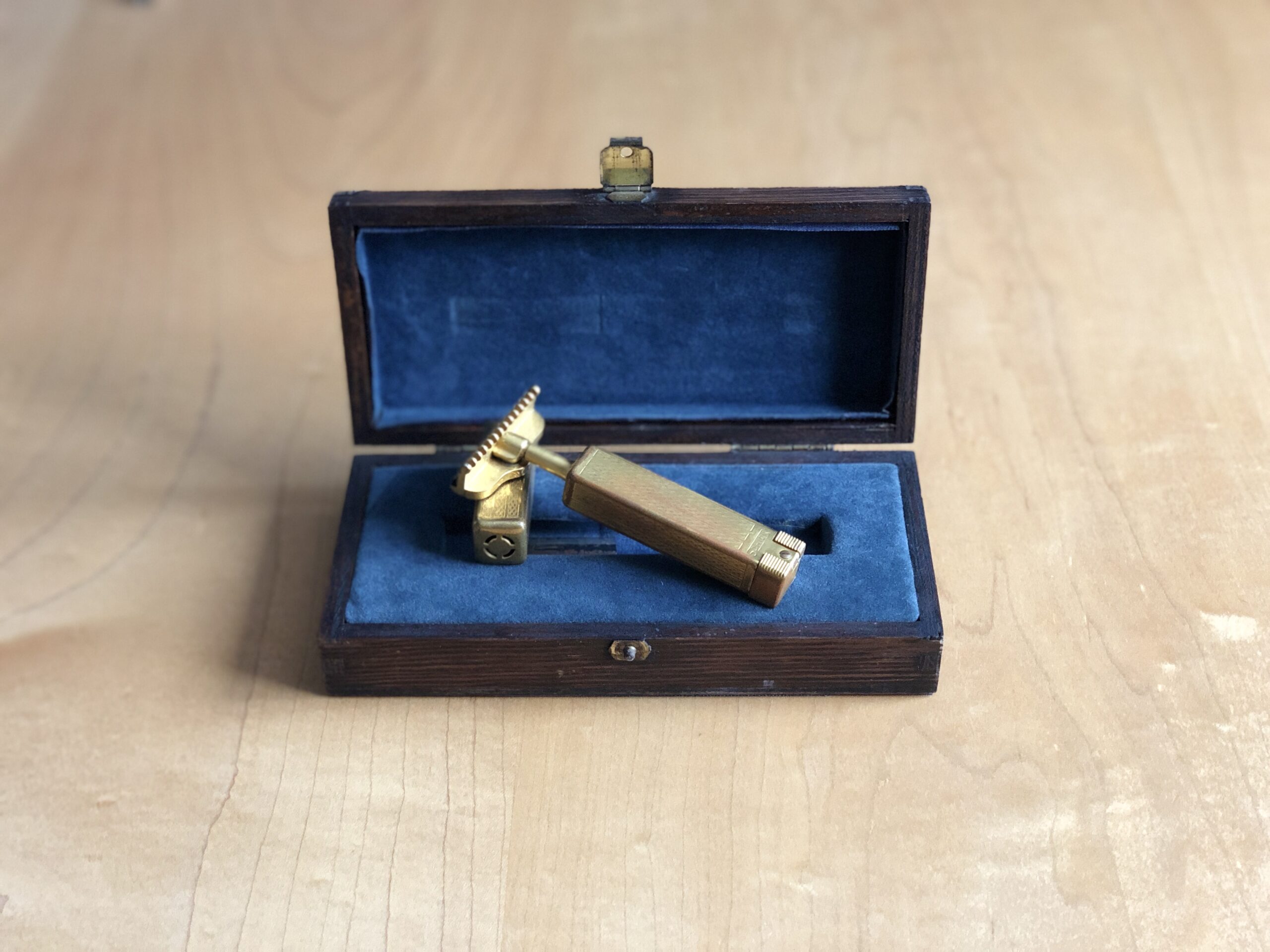As written in the History of Western Razors, the prototype of the safety razor, which continues to this day, was born in 1762, and in the 20th century, King C. Gillette developed the safety razor with replaceable blades, and since then the technology has quickly evolved. In this issue, we will introduce SCHICK’s famous “injector,” which is equipped with a revolutionary “blade replacement” mechanism, and the changes in the material of the blade itself.
Single-blade, continuous-action type? Emergence of the Sick Injector
The famous SCHICK “injector,” which still boasts strong popularity today, was conceived in 1921 by Jacob Schick, an American veteran of the war.

The prototype made at this time was a revolutionary safety razor that replaced the conventional double-edged razor with a single-edged one, and also made it possible to replace an old, dull blade with a continuous blade without directly touching the blade. The injector was not only safer, but also more portable and functional, and it rapidly became popular throughout the world. In the 1960s, with the liberalization of imports after World War II, SCHICK entered the Japanese market, and its “injector” surpassed the market share of Gillette, the mainstream “double-edged” safety razor at the time, and became the top brand in Japan.
As a side note, this Jacob Schick is actually the inventor of the electric razor as well as the injector. I think it is safe to say that Schick, who developed the current mainstay products for both “wet shaving” and “dry shaving,” is the inventor of razors comparable to King C. Gillette.
Stainless steel replacement blades are ideal replacement blades
After the birth of the injector, two types of safety razors became popular: double-edged and injector. At that time, carbon steel blades were used for both types for a long time.

However, a major revolution in replacement blades is about to take place. Stainless steel replacement blades are now available.
Carbon replacement blades have the disadvantage of being susceptible to rusting when wet, and in many cases, if left wet, they quickly rust, rendering them unusable.
In Japan’s hot and humid climate, blades are particularly prone to rusting, and manufacturers have been unable to solve the problem of blades rusting before they are used for long periods of time.
The stainless steel replacement blade introduced by Wilkinson of the U.K., which eliminated the difficult problem of “rust,” spread rapidly, especially in Europe, and Gillette, the world’s largest manufacturer of carbon-based products, was forced to follow suit. The new blade was not only rust-resistant, but also had a resin coating on the blade, which satisfied two contradictory requirements: sharpness and softness against the skin. In addition, the blade had the advantage of maintaining its sharpness, and it is no exaggeration to say that the blade was improved to the point where it was close to the ideal blade. Since then, stainless steel replacement blades have replaced carbon replacement blades as the mainstream blade.
Stainless steel Schick established in Japan
As mentioned above, the Japanese climate was said to be a harsh environment for razor blades, which did not last long. SCHICK, which had been aggressively marketing its products in Japan with its “injector,” quickly brought its revolutionary stainless steel replacement blades to the forefront to establish the image of “stainless steel is SCHICK.
In 1965, the company conducted a large-scale promotion to promote the “arrival of the stainless steel age” by distributing 3.5 million free samples of double-edged stainless steel replacement blades. The name “stainless chic” became firmly established in Japan. The TV commercials of the time also became a topic of conversation, with 15 barbers appearing to recommend the durability of stainless steel replacement blades and other explanatory techniques, which were still rare.

It is said that one of the reasons why Gillette could not make a breakthrough in Japan, despite having the largest market share in the world, was its adherence to carbon replacement blades at this stage. This lack of flexibility in sales strategy left a major aftereffect on Gillette in the years to come.

